MedievalReporter.com
Covering history's most marvelous millennium
Join our newsletter!

Covering history's most marvelous millennium
Covering history's most marvelous millennium
The Goths were a Germanic people who descended on Southern Europe. They had a complicated relationship with the Roman Empire. Goths and Romans fought each other many times, but a great number of Goths served in the emperor’s legions as well.
In the end, the Goths played a significant role in the downfall of the Empire in Western Europe. As such, they had a profound impact on the transition from Antiquity to the Middle Ages.
This is a short intro from our Medieval Guidebook. Dive deeper into the subject by reading our articles about it.
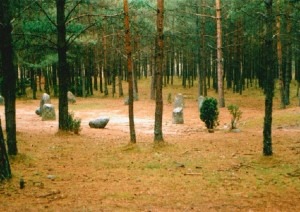
The Goths first appeared in history in the 1st and 2nd centuries CE. At the time, Roman writers mention them as living near the Vistula river – in present-day Poland. In the following centuries, they moved southeast, towards the Black Sea, where they came into contact with the Roman Empire.
The riches of Rome were tempting. Before long, the Goths took to raiding and plundering the Empire’s wealth. In 238 CE they sacked their first city. By 251 they had already killed a Roman emperor in battle. Famed for their martial skills, Goths were nonetheless recruited heavily into the Roman legions.
By the end of the 4th century, the Gothic tribes came under attack from the east. A nomadic people, the Huns, rushed across the Eurasian Steppe and invaded Europe. They subjugated many Gothic tribes on their way. Other Goths fled across the Roman border in search of safety. Always on the lookout for fresh recruits, the Roman emperors welcomed them warmly.
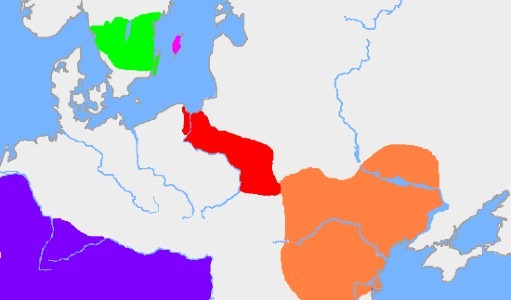
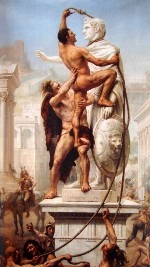
Once inside the Empire, the Goths were often treated quite badly by their Roman masters. When they rebelled against these conditions, it quickly proved dangerous to have let so many armed “barbarians” in. A great battle followed in 378, the outcome of which shocked the Roman world: the Goths killed another emperor and most of his army. An uneasy truce was concluded that lasted for one generation.
Then, in 408, Roman legions retaliated and massacred a great number of Gothic citizens. Rising in revolt once more, the Goths took to the field under the leadership of Alaric. He had earlier sought Roman recognition of his kingship, but the emperor had rebuffed him. Now, with the atrocious murder of his people, king Alaric had the perfect pretext to strike back.
The Goths marched to Rome and besieged the capital. The emperor promised to buy them off, then didn’t follow through. Further enraged by the double-dealing Romans, Alaric’s army stormed the city and plundered it for three days straight. The wealth of centuries was carried off. The Eternal City had fallen.
Once again, the Goths shook the Roman world to its very core.
“The city which had taken the whole world was itself taken.”
—Contemporary St. Jerome on the Sack of Rome
– advertisement –
– article continues below –
The Goths inside the Empire were called Visigoths, meaning “Good” Goths. Despite sacking their ancient capital, they helped the Romans a lot – typical for their difficult relations with the emperor. After the incidents in Italy, the Visigoths moved to Gallia province – roughly modern France. There, they assisted the Roman legions in an epoch-turning battle that marked the beginning of the end of the Hunnic Empire.
Thereafter, the Visigoths had to deal with a second wave of “barbarians” as the Franks swept them out of most of Gallia. Subsequently, they crossed the Pyrenees mountains and entered Hispania province – contemporary Spain and Portugal. There, they established the great Visigothic Kingdom. For a while, it was the most powerful state in Western Europe. It met its end at the hands of a muslim army that crossed over from Northern Africa, inspired by their new religion.
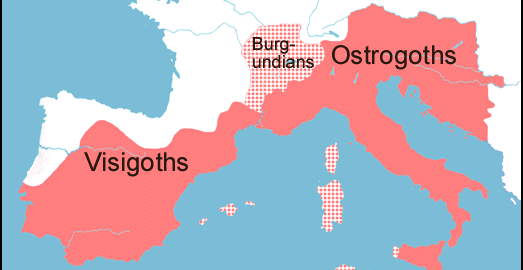
The Goths that had remained outside the Roman Empire, were called Ostrogoths – meaning “Eastern” Goths. They had been subjugated by the invading Huns. When Hunnic rule collapsed, the Ostrogoths broke free. As the Visigoths had settled in the west, it was now the Ostrogoths’ turn to invade Italy. There, they overran Odoacer, a warlord who had earlier deposed the last emperor of the Western Roman Empire.
The Ostrogothic Kingdom that was founded afterward soon came into conflict with the Eastern Roman Empire. Determined to reconquer the west, the Eastern Romans ignited an epic clash of cultures on the Italian peninsula that lasted for nearly twenty years. The struggle exhausted both parties immensely. Consequently, the Ostrogoths were also overwhelmed by “second-wave barbarians” as the Lombards swept into Italy.
By then, the Early Middle Ages were well underway – an era which the Goths greatly helped come about by the Sack of Rome.
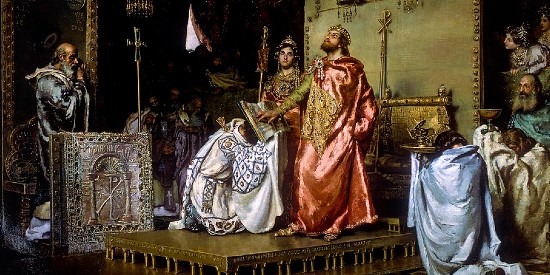
Disclosure: we work hard to provide you with exclusive medieval reports and guides. To make the Middle Ages accessible to everybody, we’d like this information to remain FREE. Therefore, some of the links below are affiliate links, meaning – at no additional cost to you – we will earn a small compensation if you click through.
Featured Image Credit: Gambargin (deviantART)
Grab a short intro on another civilization from our Medieval Guidebook.